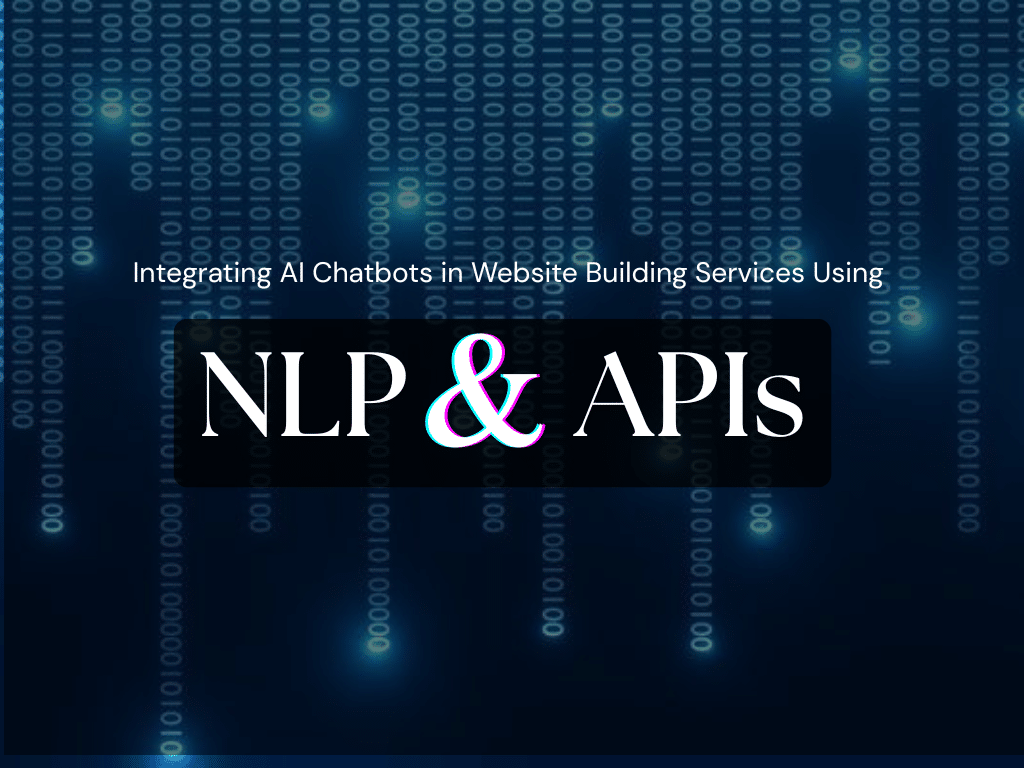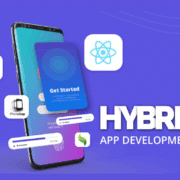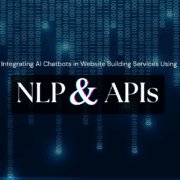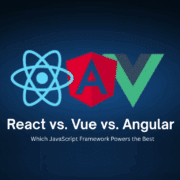Integrating AI Chatbots in Website Building Services Using NLP and APIs
In an era of digital-first interactions, businesses are constantly seeking ways to enhance user experiences and streamline communication.
One of the most impactful innovations in recent years is the integration of AI-powered chatbots in websites and applications. These intelligent virtual assistants have revolutionized customer service, lead generation, and even e-commerce by providing 24/7 real-time interactions.
But the real thing is, how do you integrate an AI chatbot into website building services?
The answer to this question lies in the meticulous blend of Natural Language Processing (NLP) and Application Programming Interfaces (APIs).
This powerful duo allows developers from the best web development company to create AI-powered chatbots for websites and web applications that not only understand human language but also seamlessly communicate with other systems.
In this blog, we’ll dive deep into how AI chatbots are created by website development services using NLP and APIs, their benefits, and how businesses can leverage this new-edge technology to stay ahead of the curve.
Understanding AI Chatbot
An AI chatbot is an advanced software application that simulates human conversation, either through text or voice interactions. Using artificial intelligence (AI), particularly natural language processing (NLP), these chatbots understand and respond to user queries in a natural, human-like manner.
AI chatbots are programmed to learn from interactions, enabling them to improve their responses over time and offer personalized experiences to users. Businesses often partner with professional website development services to create chatbots that enhance customer engagement and reduce operational costs.
The Role of NLP in AI Chatbots
NLP is a subfield of artificial intelligence that focuses on the interaction between programs and human language. It plays a key role in enabling chatbots to understand, interpret, and respond to text or voice inputs naturally. Owing to this significant role, the NLP industry has expanded from $10.2 billion in 2019 to $26.4 billion by the end of 2024, according to a Markets and Markets report.
Some key responsibilities of NLPs in AI chatbots include:
- Intent Recognition- Understanding the purpose behind a user’s message.
- Sentiment Analysis- Detecting the user’s emotional tone.
- Entity Recognition- Identifying key information like names, dates, or locations.
- Contextual Awareness- Maintaining the context of a conversation over multiple messages.
The Role of APIs in AI Chatbots
An API (Application Programming Interface) acts as a bridge that allows different software systems to communicate. APIs are crucial for AI chatbots as they enable seamless communication and data exchange between the chatbot and other systems, allowing for functionalities like real-time data access, integration with various platforms, and personalized responses.
For example:
- A weather chatbot can fetch real-time data from a weather API.
- A support bot can create tickets via a CRM tool using its API.
- A shopping assistant bot can retrieve product details from an e-commerce API.
Process for Integrating AI Chatbots in Website Building Services
Integrating AI chatbots in web development using NLP and APIs is an extensive process that requires time, effort, and resources significantly. While most businesses prefer to partner with a professional website development company for this purpose, following the best practices can help businesses create powerful chatbots.
Owing to the extensive process, here are some of the key steps that are followed while integrating AI chatbots in web development using NLP and APIs:
Define Your Objectives
The first step in integrating an AI chatbot is to clearly define your goals. Identify the specific problems the chatbot will solve, such as handling FAQs, booking appointments, or offering product recommendations. Understanding your target users and their expectations will help shape the bot’s personality, tone, and features, ensuring it delivers meaningful and valuable interactions.
Choose a Development Approach
There are different approaches to building a chatbot, depending on your resources, requirements, and chosen web development company. You can use a platform like Dialogflow, IBM Watson, or Botpress for a streamlined experience with built-in NLP features. Alternatively, you can opt for custom solutions using libraries like Rasa, spaCy, or NLTK for better flexibility, customization, and control.
Design Conversation Flows
Crafting intuitive and engaging conversation flows is essential for a successful chatbot. Start by mapping out user journeys, common questions, and expected responses using tools like Miro or Botmock. This visual planning ensures logical progression and enhances user experience. Proper flow design also helps the NLP engine recognize intents more accurately and improves response efficiency.
Integrate an NLP Engine
An NLP engine serves as the brain of your chatbot, interpreting user inputs in real time. Professional website development services prefer an NLP engine that aligns with the chatbot’s language requirements and complexity needs. Integration of the NLP engine with back-end systems via webhooks allows the chatbot to respond with personalized and dynamic business data.
Set Up APIs
APIs are the backbone of a chatbot’s dynamic responses. They allow the bot to access real-time information from other applications like CRMs or e-commerce platforms. RESTful APIs are commonly used by website designing services for these integrations. By connecting your chatbot to relevant APIs, it becomes capable of delivering personalized, up-to-date responses that improve the user experience.
Frontend Integration
To make your chatbot accessible, you must embed it into your website or web application. Most chatbot platforms offer JavaScript SDKs or HTML snippets that can be easily added to your front end. For custom web apps, website designing services can build dedicated components using React or Vue. Styling and positioning the chatbot thoughtfully ensures it’s both noticeable and non-intrusive to users.
Test and Optimize
Thorough testing ensures your chatbot functions as expected under various scenarios. Experts from a professional web development company simulate different user intents, edge cases, and error conditions to measure accuracy and analyze which queries succeed or fail. Regular optimization, model training, and API performance tuning will ensure the chatbot remains effective over time.
Challenges While Integrating AI Chatbots using NLP and APIs
As the process of integrating AI chatbots in website building services is quite extensive and involves various components, several challenges also arise during the process. These challenges can hinder the performance of chatbots, which is why businesses prefer to work with a website development company to avoid them proactively.
Let’s take a look at some common challenges that can appear during the integration of AI chatbots in web development services:
Context Handling
Maintaining the context of a conversation over multiple interactions is difficult. A chatbot needs to remember past interactions and use this context to make current interactions more relevant and coherent.
User Intent Recognition
Identifying the users’ intent from their input can be challenging, especially when the input is ambiguous. The AI chatbot must be trained on a wide range of possible inputs to accurately understand user intent.
Personalization
Tailoring conversations to individual users, based on their preferences, history, and behavior, is essential for enhanced user experience but is challenging to implement effectively in AI chatbots.
Handling Unexpected Queries
Users may pose questions or use language that the chatbot hasn’t been trained on. Thus, website designing services focus on building a chatbot that can gracefully handle such unexpected inputs without breaking the flow of conversation.
Scalability and Performance
As the number of users increases, the chatbot should be able to scale accordingly without compromising on response time or accuracy. Achieving such scalability without the help of website development services is a significant challenge.
Final Thoughts
Integrating AI chatbots into web development is more than a trend; it’s a game-changer that enhances user experience, improves efficiency, and drives innovation. By utilizing technologies like NLP and APIs, businesses can create smarter chatbots for their website or web applications that cater to user needs.
Whether you’re developing a startup MVP or upgrading a large enterprise platform, now is the time to embrace AI-powered chatbots by partnering with a professional website development company and leading the charge into the future of improved web interaction and unmatched user satisfaction.




